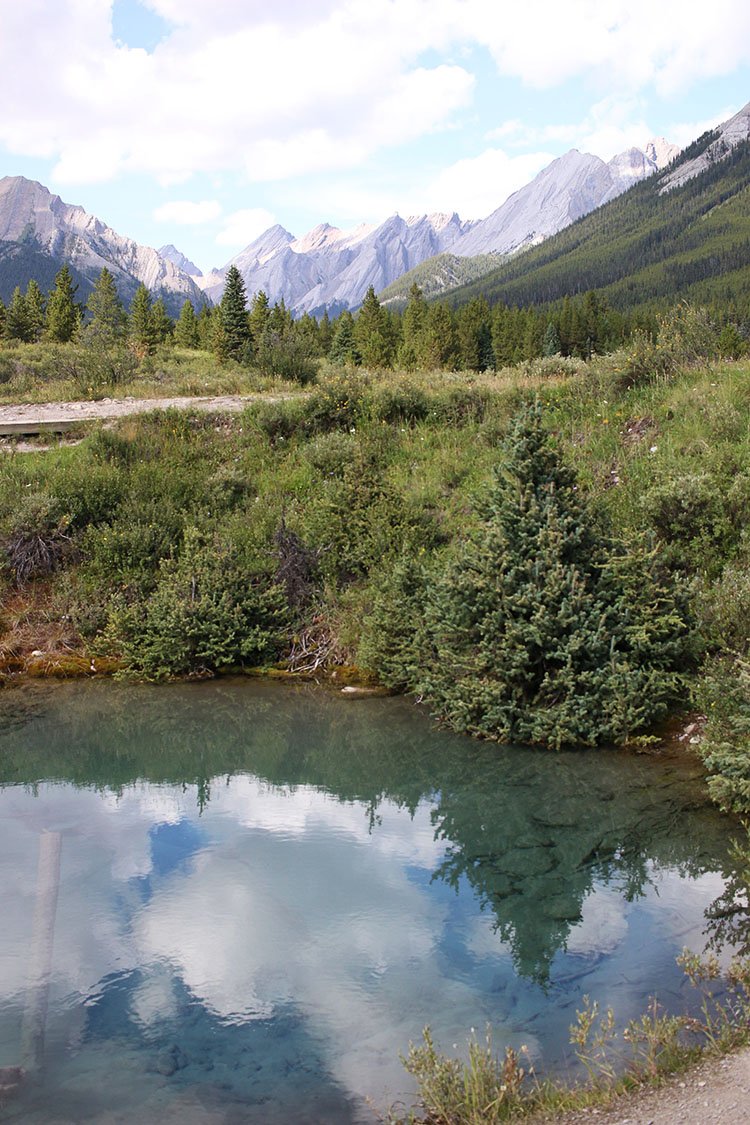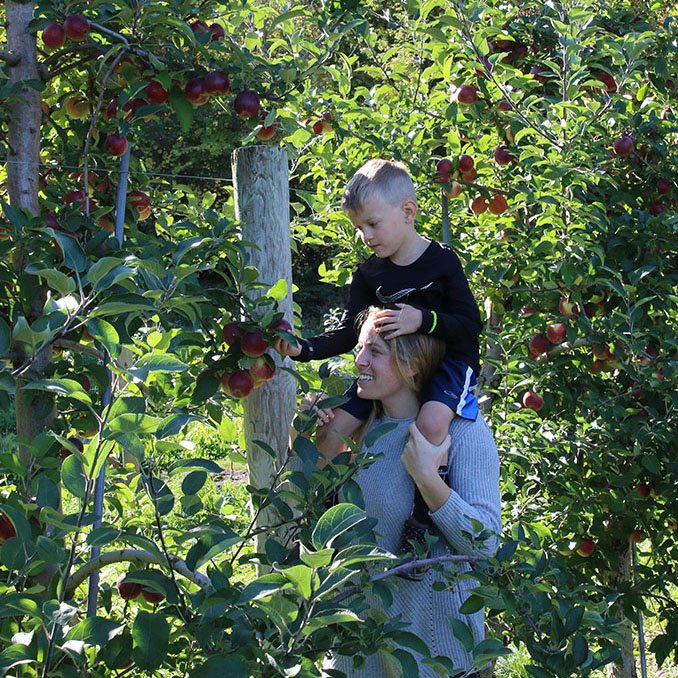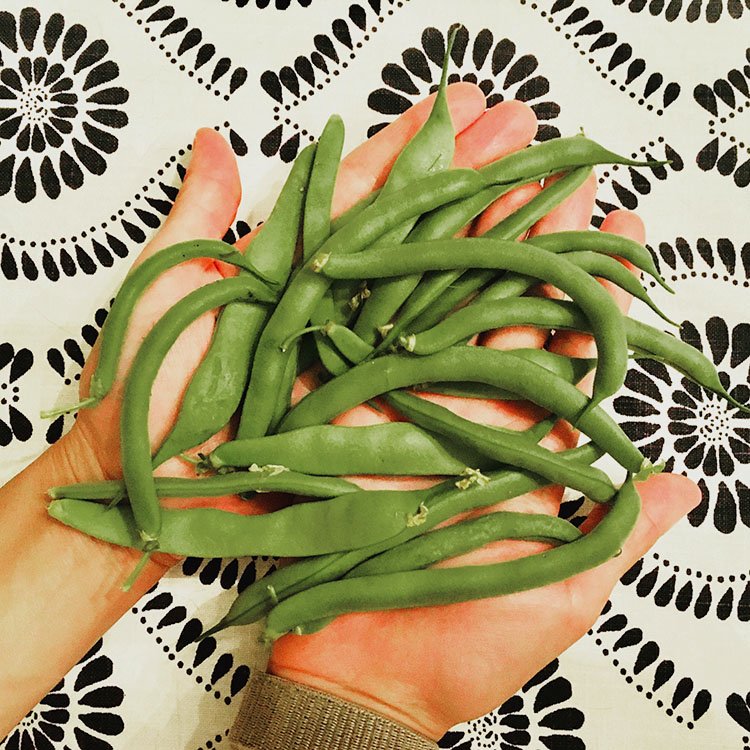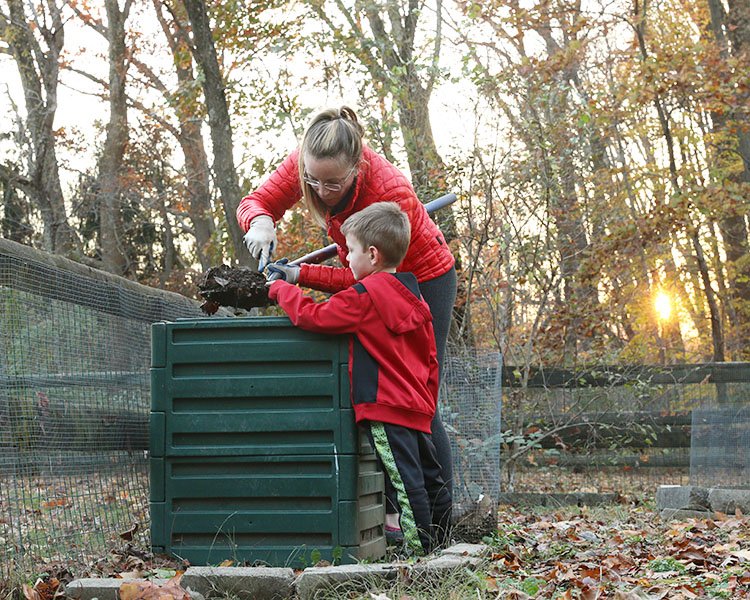9 Simple Tips For Eco-Friendly Lawn Alternatives
Create a yard that is a haven for your family and more friendly to the environment. Try some of these more eco-friendly lawn alternatives and enjoy your outdoor space all season long.
This post was sponsored by instead and contains affiliate links. All opinions are my own.
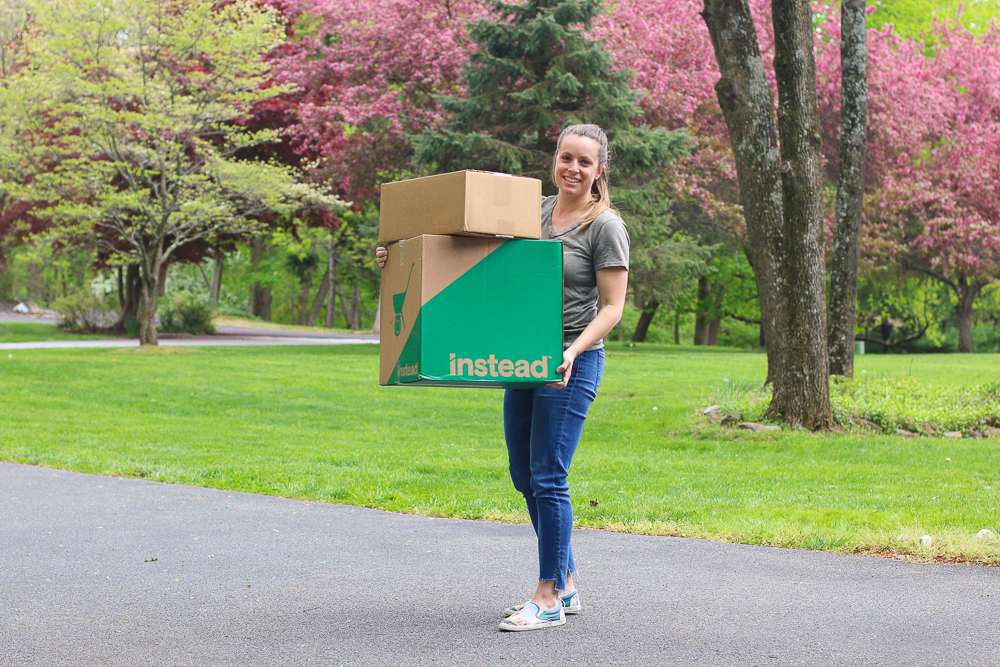
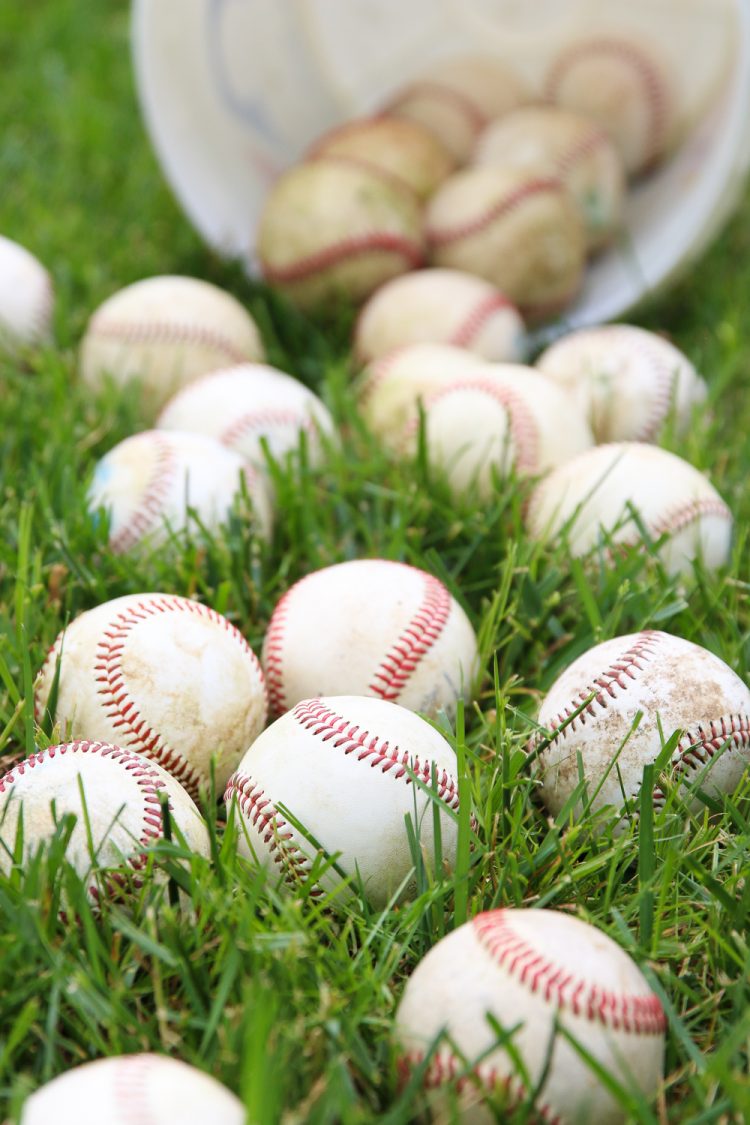
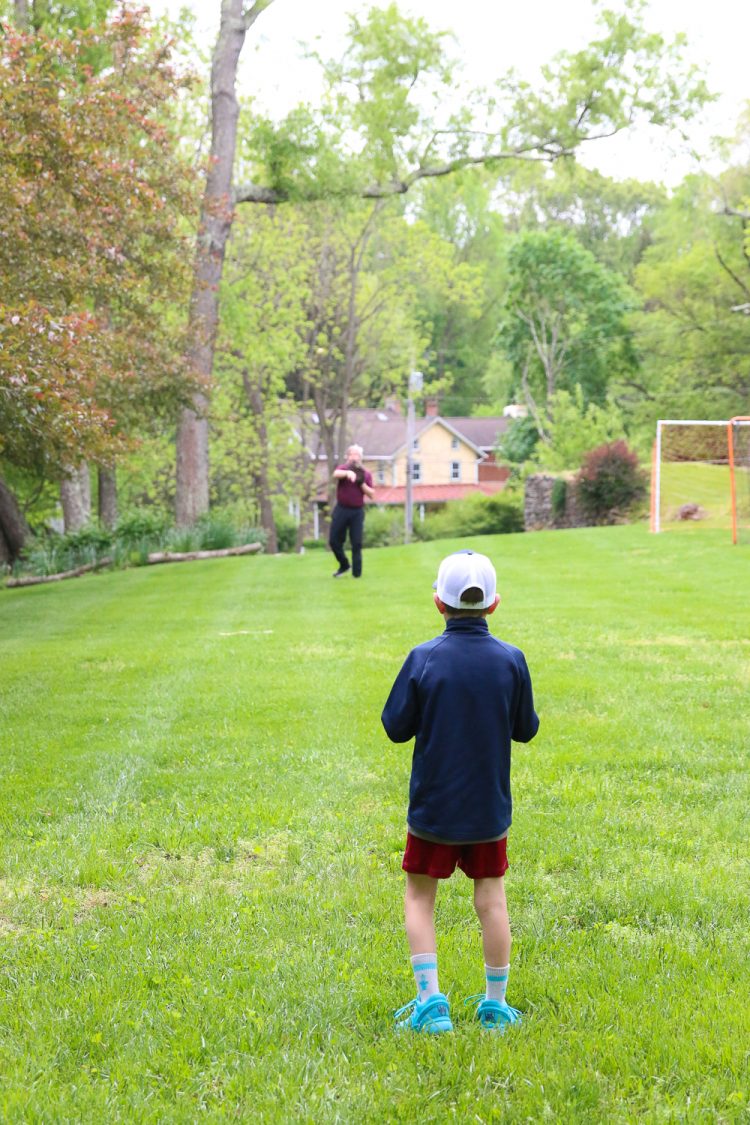
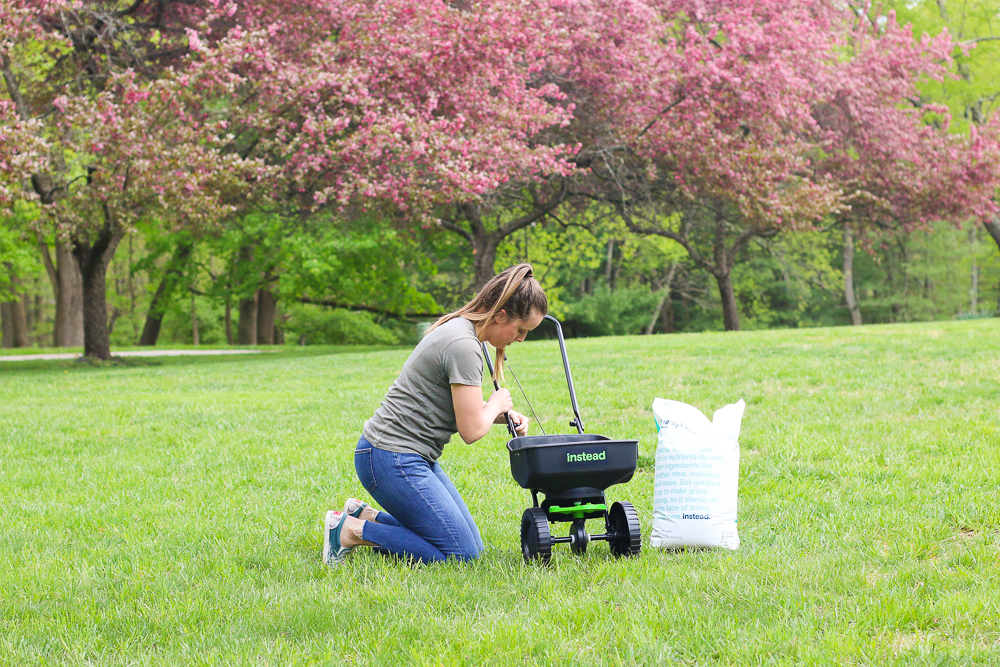
At 7 am on a Saturday morning, my older son stands next to our bed and asks my husband to pitch him batting practice or throw the football with him in our front yard. While I’m half asleep, my husband rolls out of bed and gets ready to play several hours of sports with our boys in our yard, just like we planned.
Seven years ago, we purchased our home with its large, flat front lawn specifically to enjoy endless hours of sports and games with our boys. My husband and the boys use our lawn almost daily for baseball, soccer, football, golf, and more. We love having a lawn for play, and we also love the planet.
Grass gets a bad rap, and understandably so at times. Perfectly manicured and heavily irrigated lawns aren’t awesome for the planet, particularly when they’re just maintained to look pretty. Environmental concerns sprinkle through eco-communities around resource usage and ecosystem impacts of expansive, pristine green lawns, suggesting appreciation for conventional lawns and eco-friendly living are mutually exclusive pursuits.
But open grassy areas around our homes can also be wonderful play spaces and gathering areas for family and friends. My boys spend hours outside running around with their friends, tackling each other in the grass during a game of flag football, or building forts with fallen branches. When properly managed, a grassy yard has plenty of merits.
9 Tips For Eco-Friendly Lawn Alternatives
I believe that we can have eco-friendly lawns without giving up on the planet. I’ve compiled a list of eight ideas for eco-friendly lawn alternatives. From eco-friendly lawn care products to low-maintenance alternatives to grass, a combination of the following tips can help you preserve your play space and the planet.
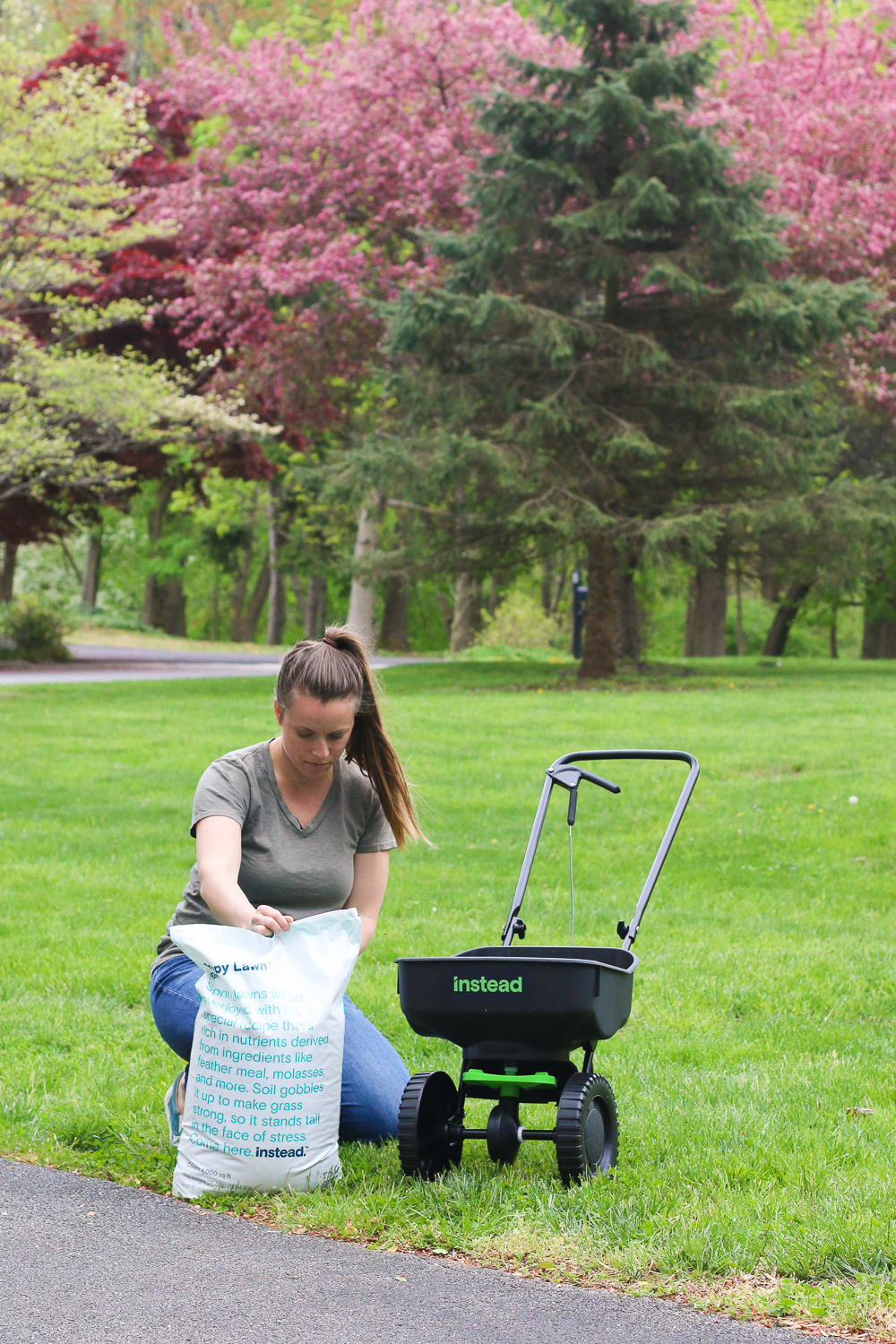
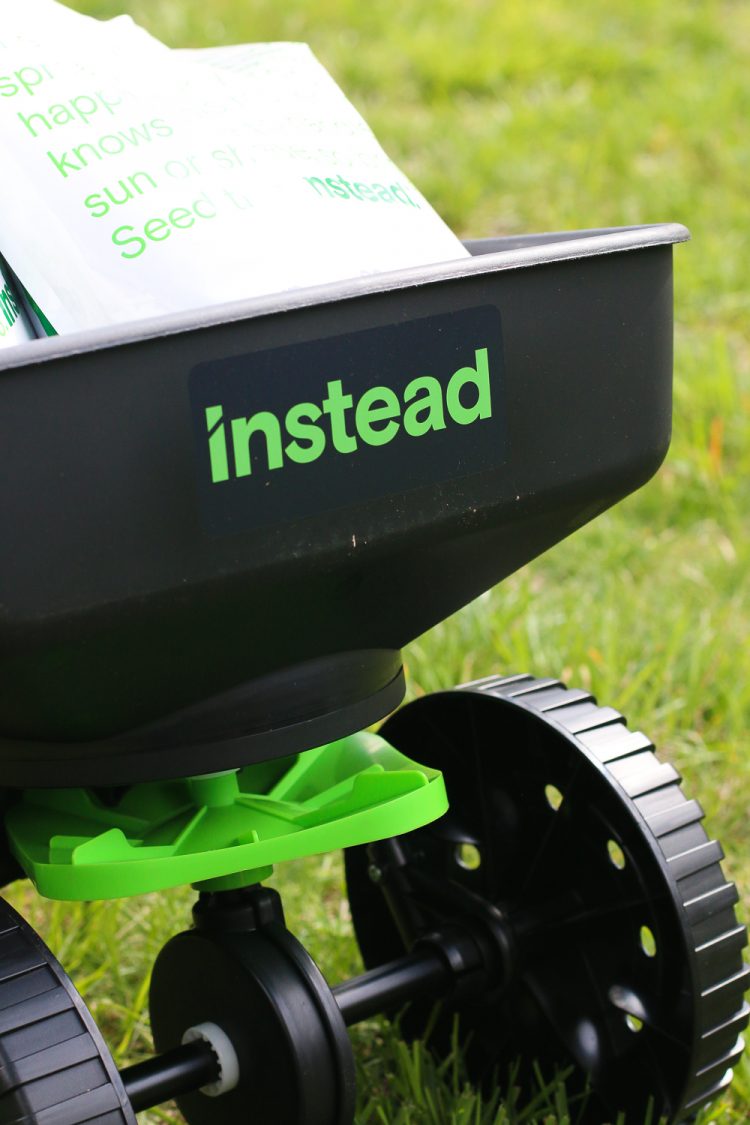
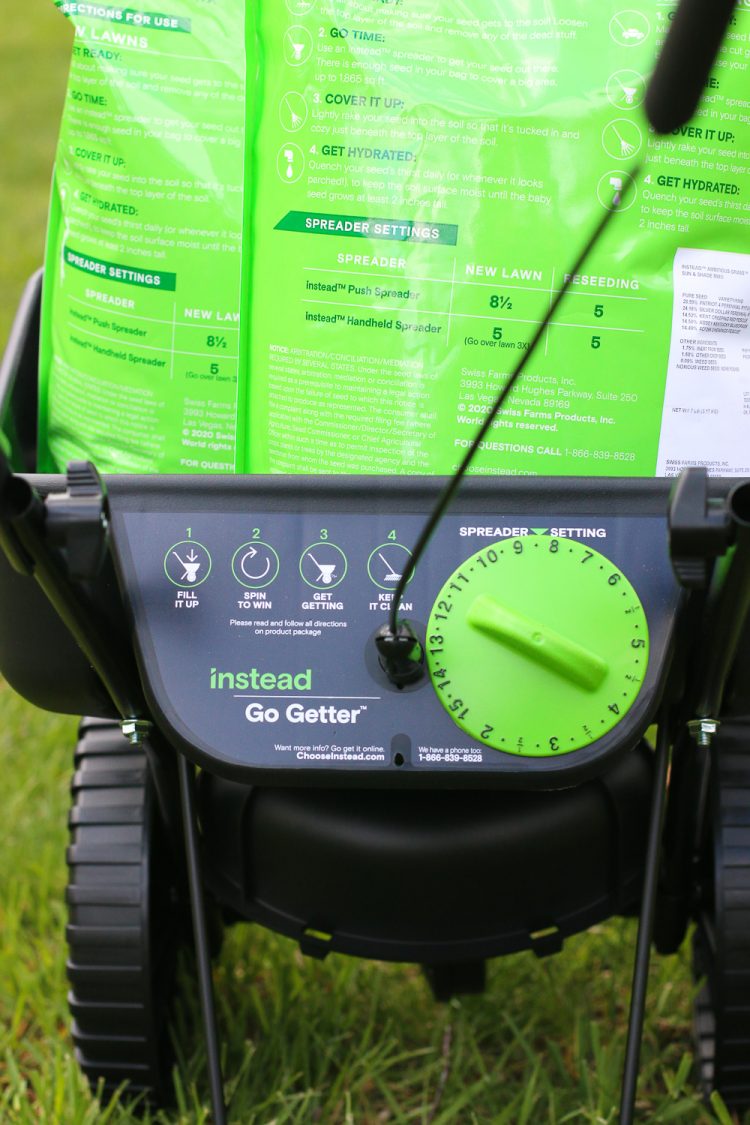
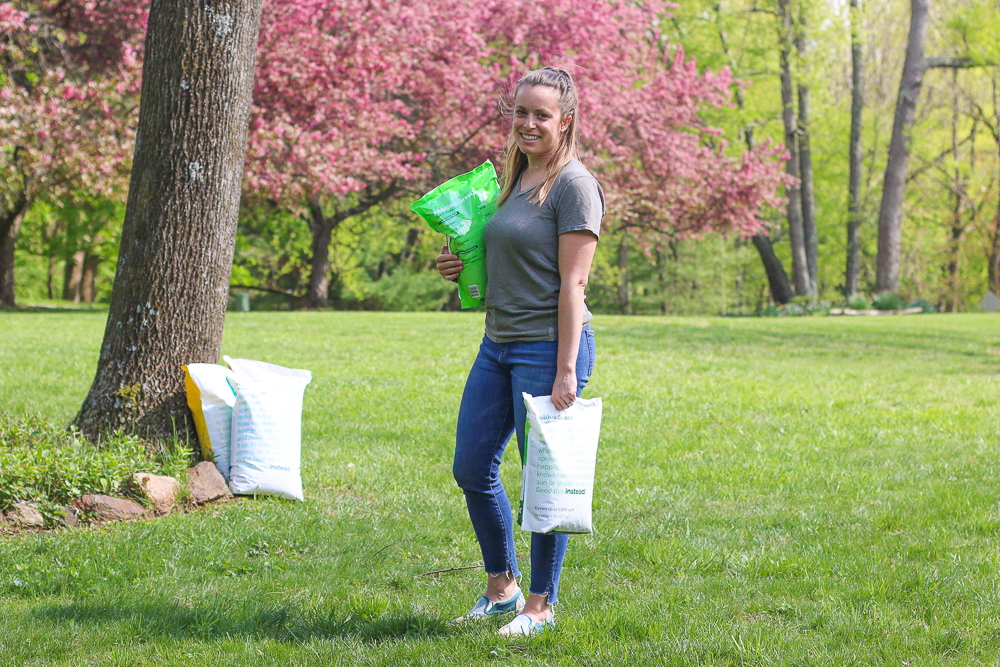
Choose instead and Ditch Traditional Lawn Care
instead is a lawn care alternative that’s made with natural ingredients like molasses, feather meal, wheat flour meal, blood meal, and sulfate of potash. These are the same types of ingredients I often find in hot compost starters that fuel the microorganisms that create healthy soil and finished compost.
If you’ve spent a hot minute around here, you know healthy soil is my jam. Many traditional, synthetic/chemical fertilizers don’t help the soil. While they provide nutrients for plants, they often prioritize plant growth and ignore soil health and quality. Without the mutually beneficial relationship between microorganisms and plants, microorganisms die and the soil quality deteriorates.
Why instead is Different?
Because instead feeds the soil microbes, it helps bolster the mutually beneficial relationships with plants and living organisms in the soil. This creates a much healthier, resilient, and biodiverse ecosystem under your lawn that’s good for the planet.
Furthermore, instead does not include any pesticides or herbicides in its product lineup and is safe for the whole family when used as directed. The little ones can head out and play on your lawn without all the chemicals many traditional lawn care products include in them.
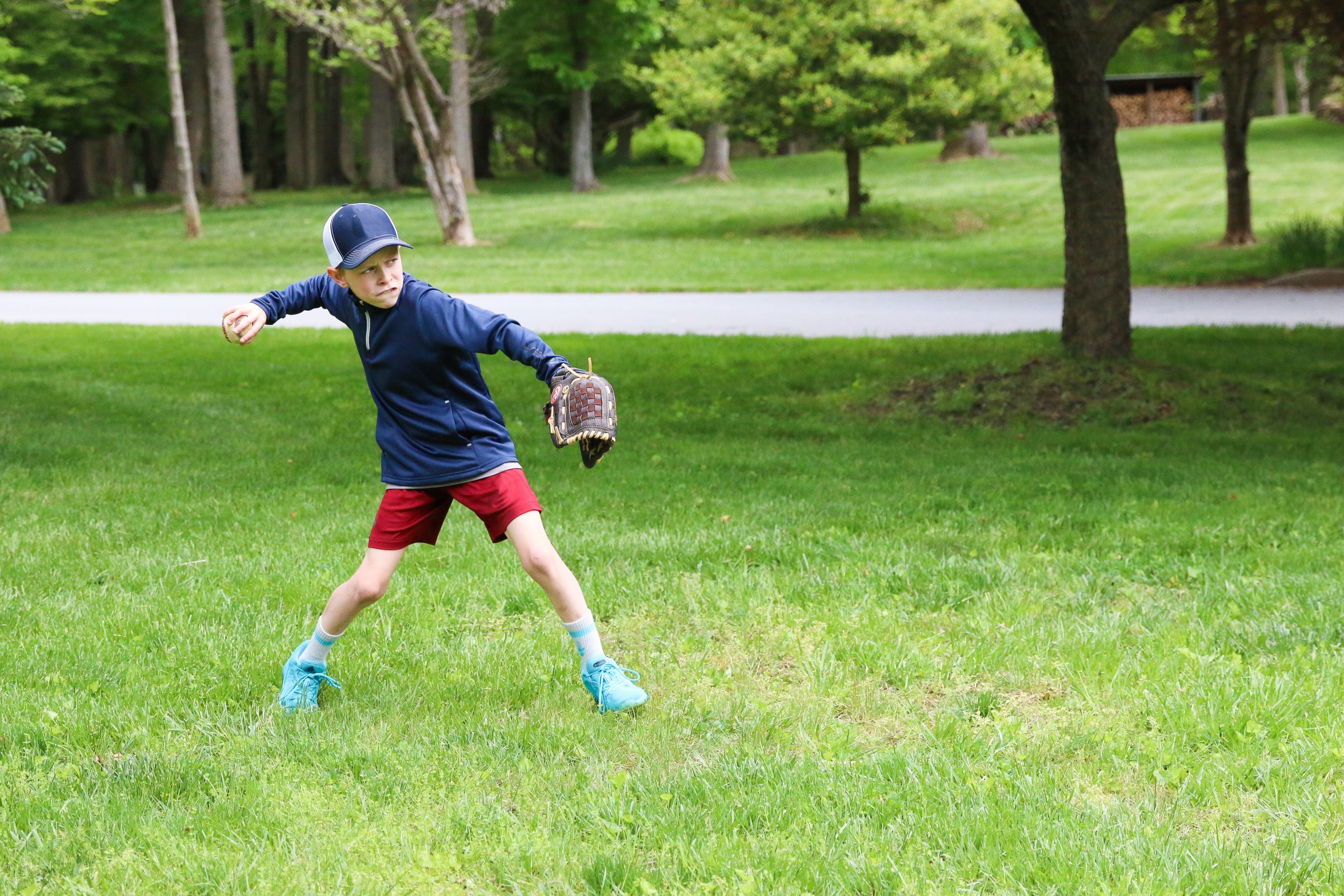
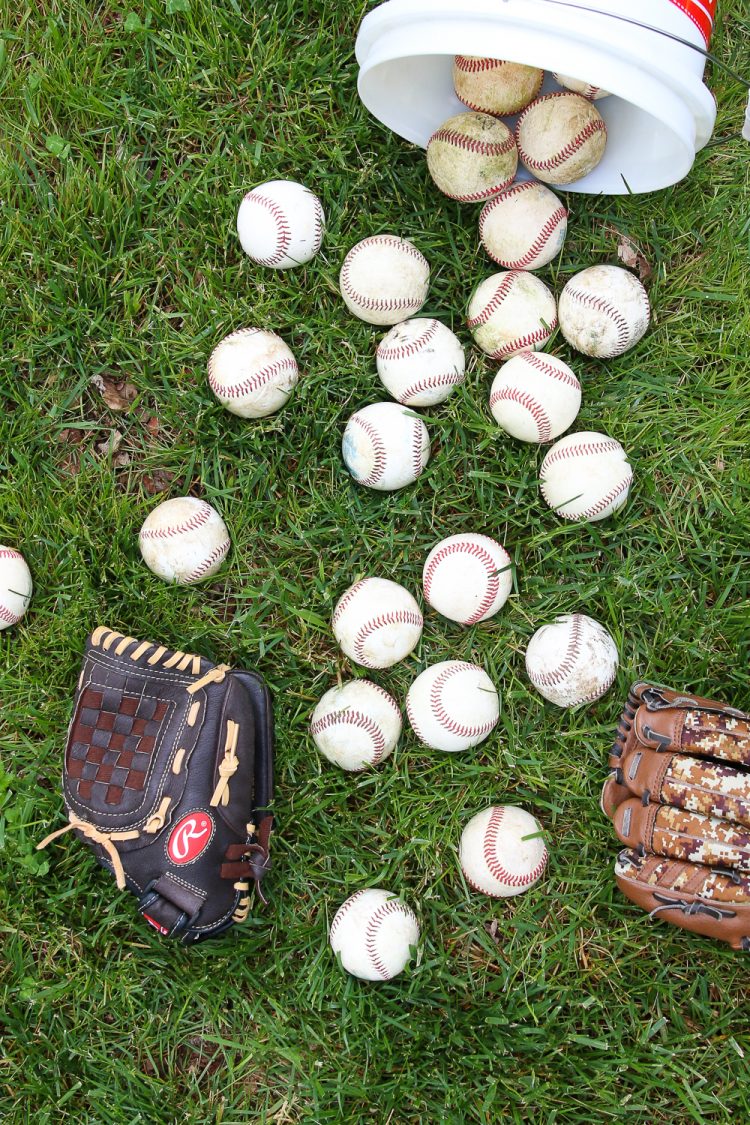
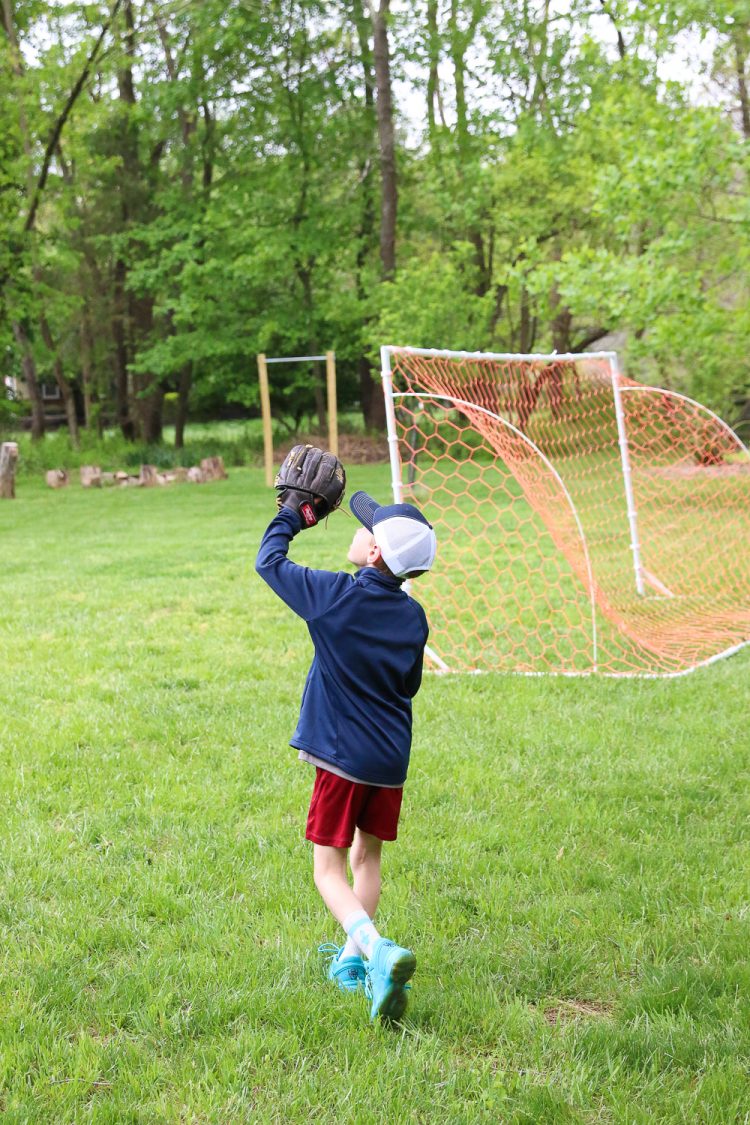
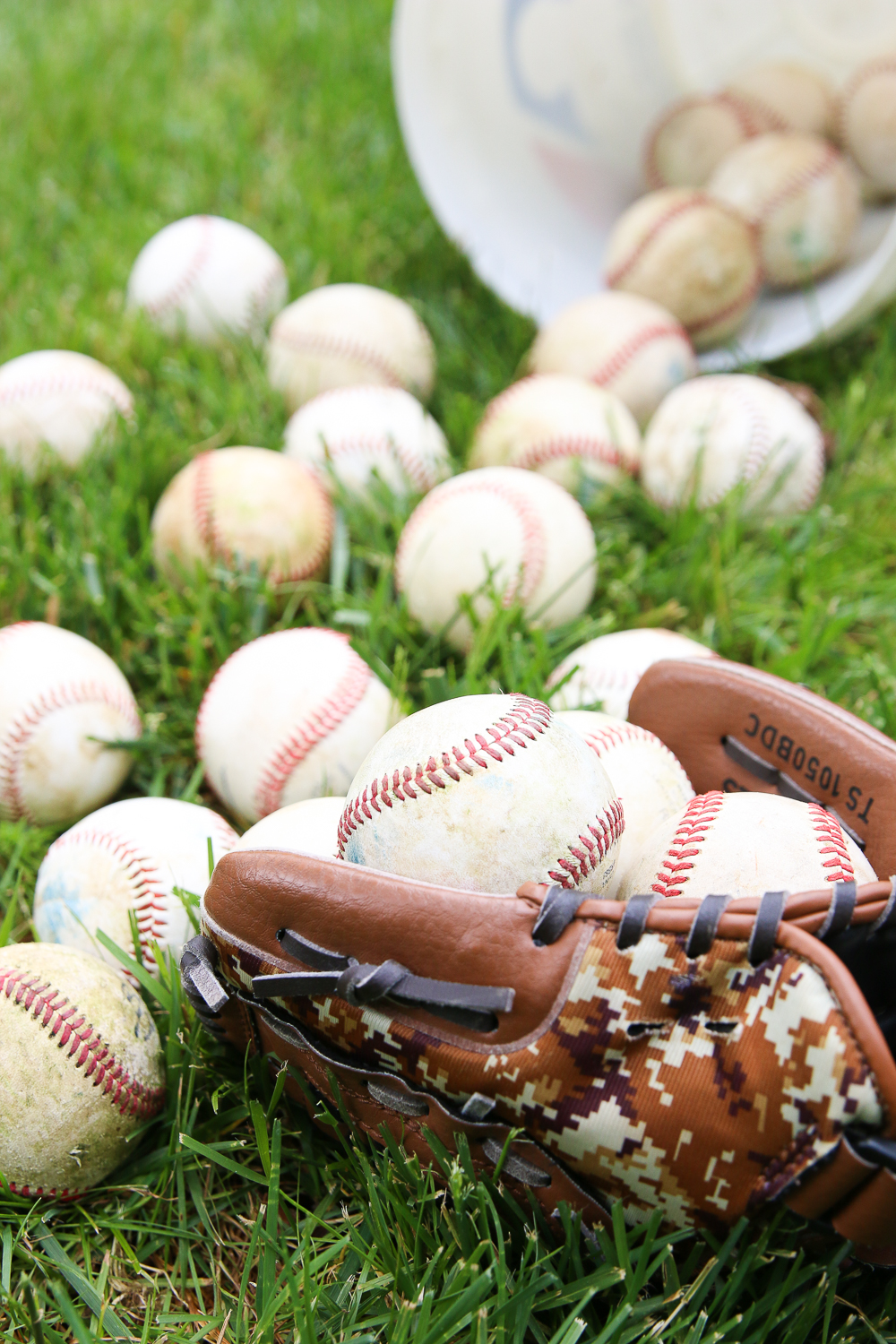
How Does instead Work?
instead is a seasonal lawn care program shipped directly to your home each season according to the natural growing cycles of your lawn based on where you live, and you can also buy it directly in stores. In spring, summer, and fall, instead ships a predetermined amount of natural lawn care fertilizer to you based on the size of your lawn and grass type where you live.
Because only a portion of our yard is grass, while the rest is tree-covered or gardens, I selected the size option during ordering based on just the area of our yard covered in grass. The order process is really simple and does not require any special landscaping knowledge.
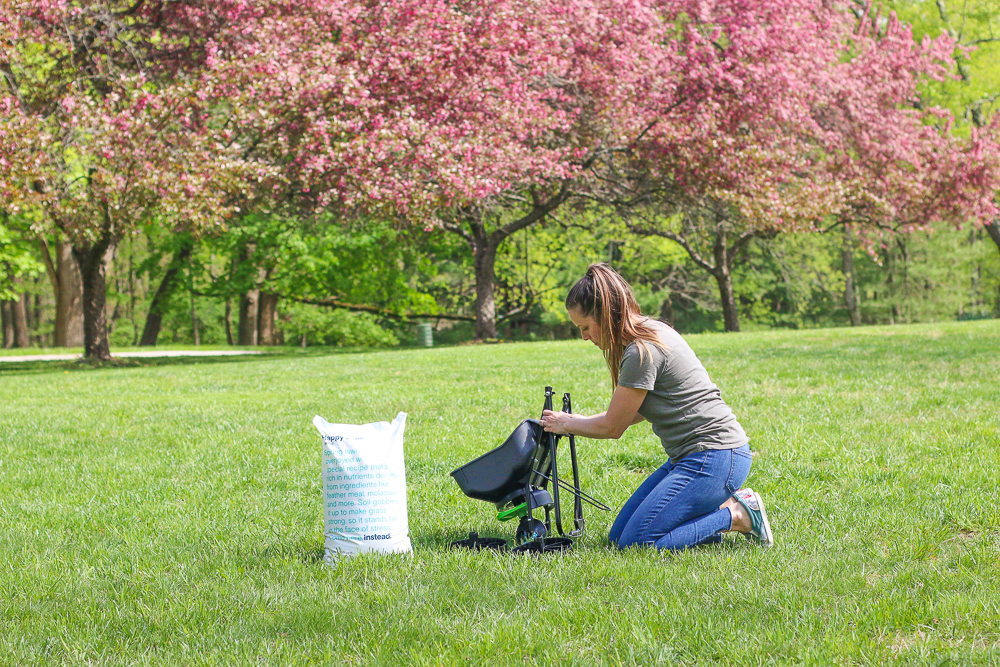
Is instead Easy To Use?
Yep! The instead Go Getter Spreader took me about two minutes to set up (truly, no more than 120 seconds). You simply click the two wheels into place, snap the handle up, and you’re done.
Each shipment of your instead lawn care plan arrives around the time you should spread it. The shipments are based on the climate where you live. instead manages the soil amendment timeline for you, so it’s easy to know when to fertilize your lawn.
The packaging for each season of instead lawn care includes simple instructions on the back of the bag. I know next to nothing about fertilizing my lawn, and the instructions were clear and concise despite my novice experience.
Is instead Packaging Eco-friendly?
The Go Getter Spreader, which is made of 80% recycled plastic, comes in a cardboard box with no plastic packaging. We put the Go Getter box in our compost to feed that back to the soil as well.
The fertilizer arrives in plastic bags with no additional plastic packaging inside the cardboard box. The plastic bags are made of 25% bio-based renewable plastic made from sugarcane and can be recycled at your local store drop-off. Find a location to recycle fertilizer bags near you.
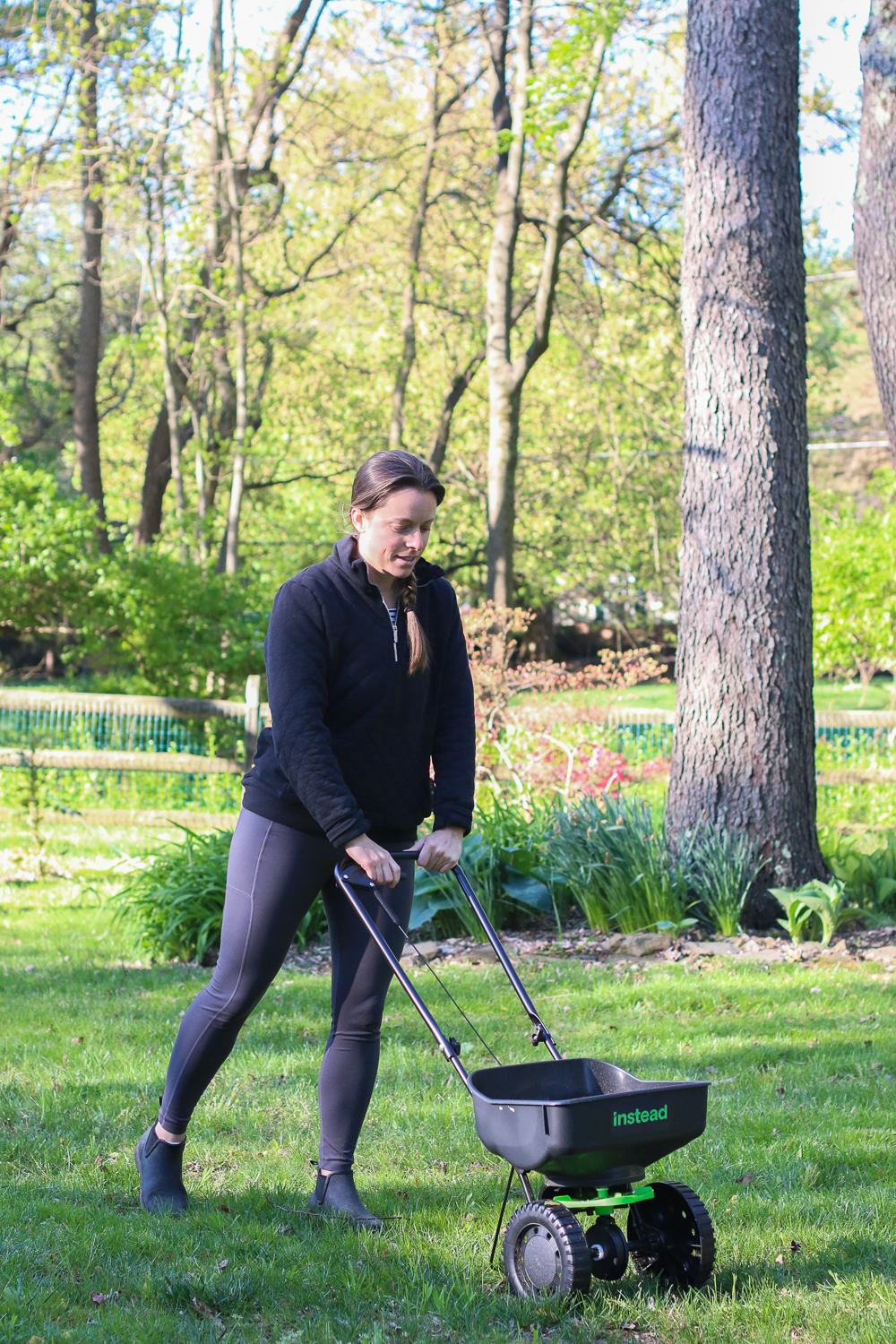
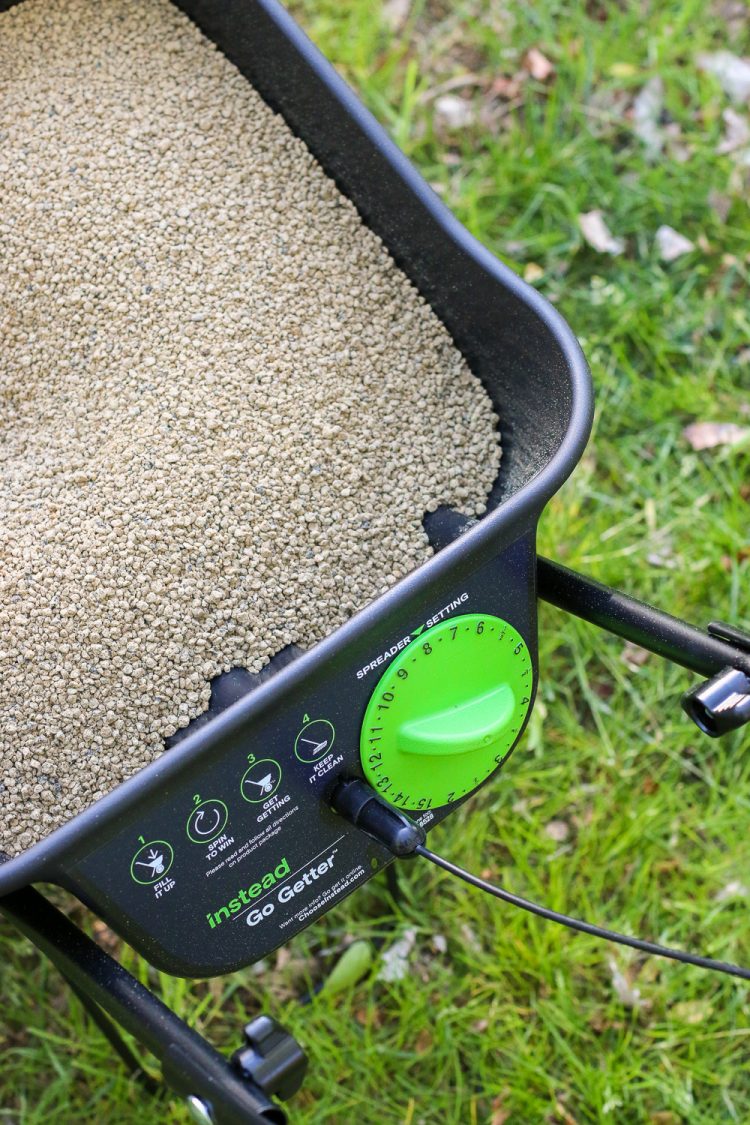
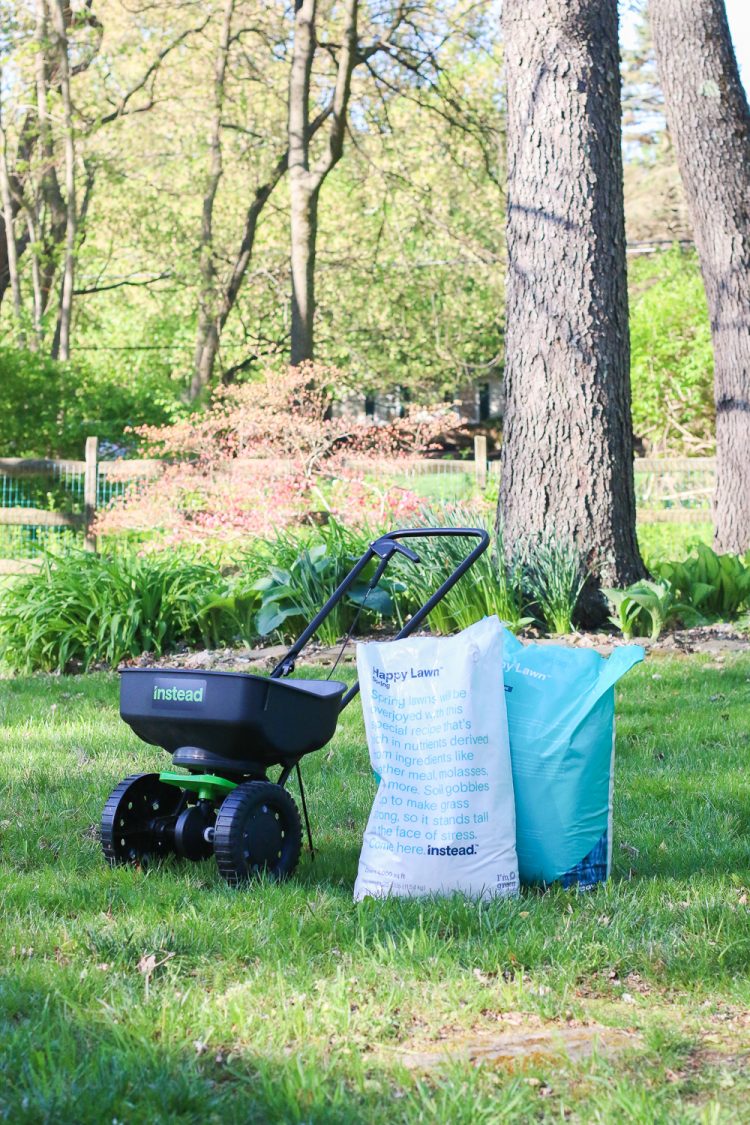
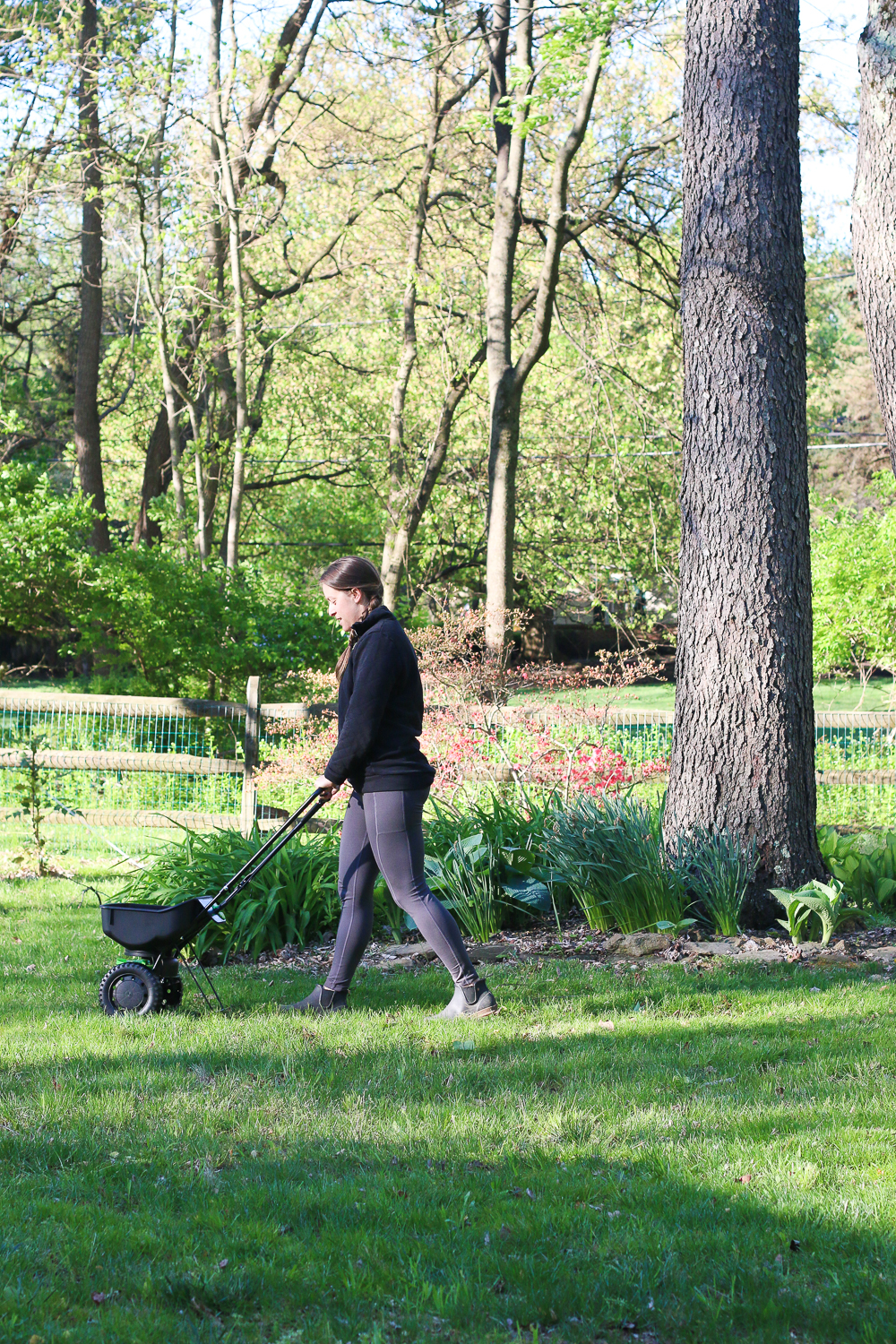
Being More Thoughtful About Managing Our Yards
Having open green spaces for our kids to play is important to many of us. With a natural lawn care alternative like instead, we don’t have to sacrifice a lawn to uphold our values. We just need to be more thoughtful about how we manage and care for the lawn in ways that are less taxing on and more beneficial for the planet and the environmental health of our communities.
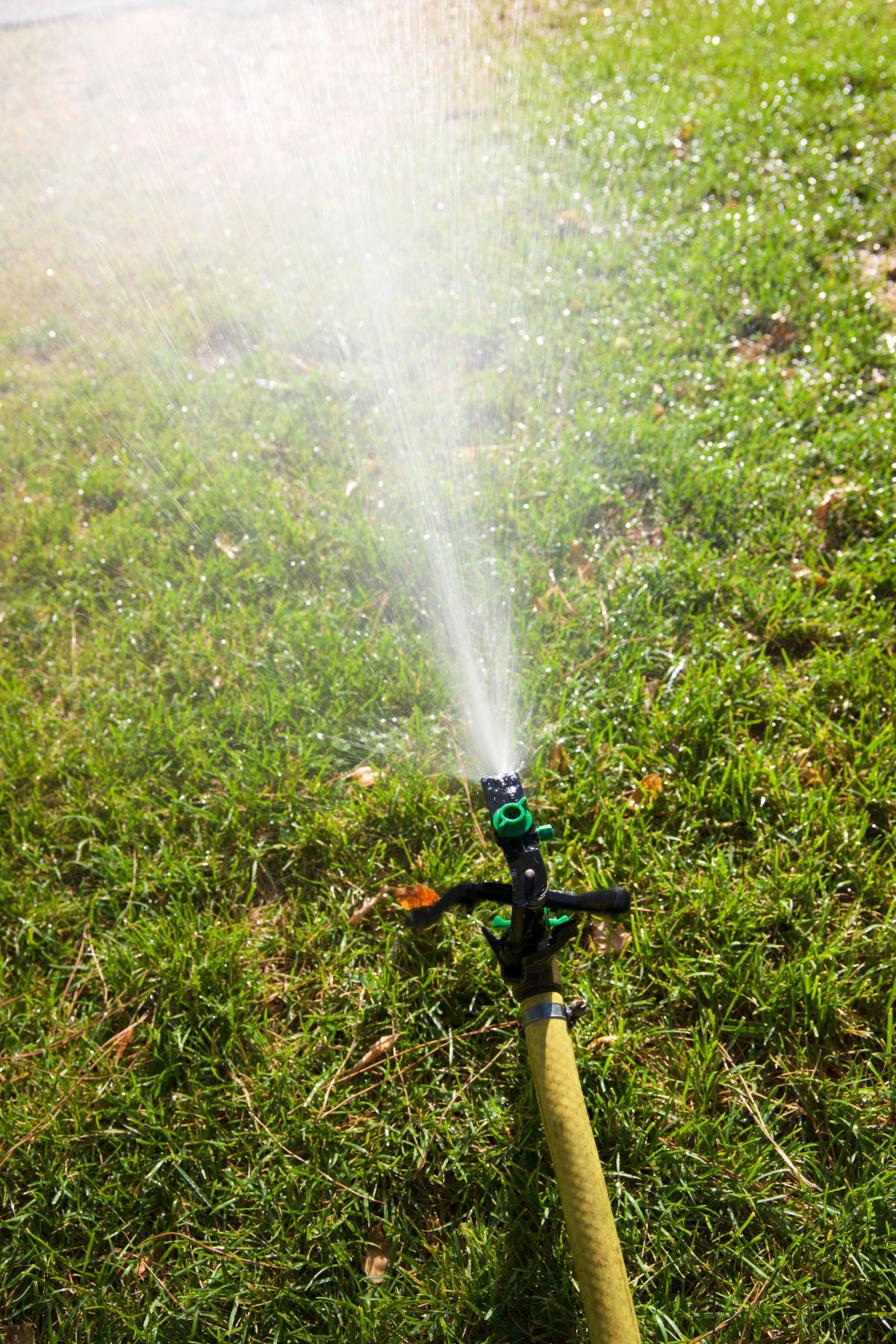
Water Your Lawn Less Often
You don’t need to water the lawn all that often. We don’t even own a sprinkler, so we have never watered our lawn. It rains a fair amount in Pennsylvania, so it might be helpful to water grass a bit more often in drier climates.
Regardless of the weather where you live, healthy soil rich in carbon-based organic matter often retains more water than dried-out dirt. Using a product like instead adds the carbon-based organic matter that your soil needs to help it retain water.
Also, eco-friendly lawn care respects the cycles of nature. Perfect aesthetics aren’t necessarily the goal. At times during the heat of the summer, our grass turns a bit brown, but it always bounces back. A temporarily brown lawn serves our family just as well as lush green grass and reserves water supply for more pressing needs.
If you live in an area with water shortages, water conservation is particularly important. Wasting water on a turf grass lawn that’s doing next to nothing for the ecosystem is hard to swallow when that water could be used for drinking, growing food, or a variety of other purposes more integral to life than monoculture lawns.
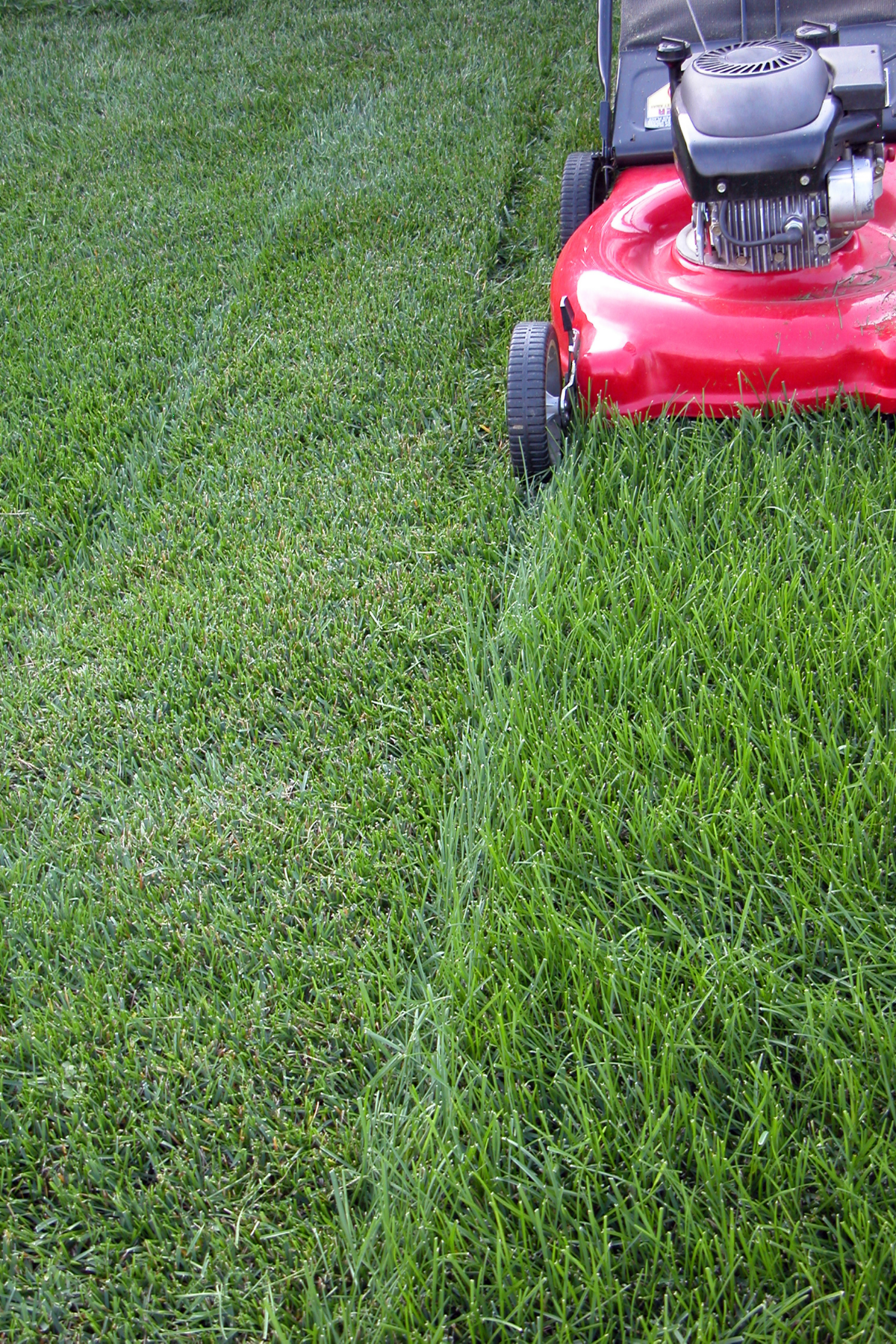
Mow Your Lawn Less Frequently
It’s much better for your lawn and the environment to have longer grass than overly short grass. Save yourself hours of time and mow your lawn less frequently. Longer grass blades provide more surface area for photosynthesis, the process by which grass creates energy and food for strong root growth and good shoots. Longer blades also provide more shade for the soil to help retain moisture (and consequently, need less irrigation) as well as help block out weed growth.
When you allow more time between mows, you also give wildflowers a chance to grow. Pollinators like bees need pollen from those wildflowers. Pollinators are really important to the ecosystem and to our food supply. They have seen significant declines in their habitat in recent years, which also makes it harder to find food. Let the wildflowers flourish a bit between cuts and do the pollinators a favor.
Most lawnmowers also use fossil fuels and are noisy. I can hear my neighbors mowing their lawns several houses down the street. Reduce carbon emissions and noise pollution when you mow the grass less often and use that time instead to enjoy your yard with family or friends.
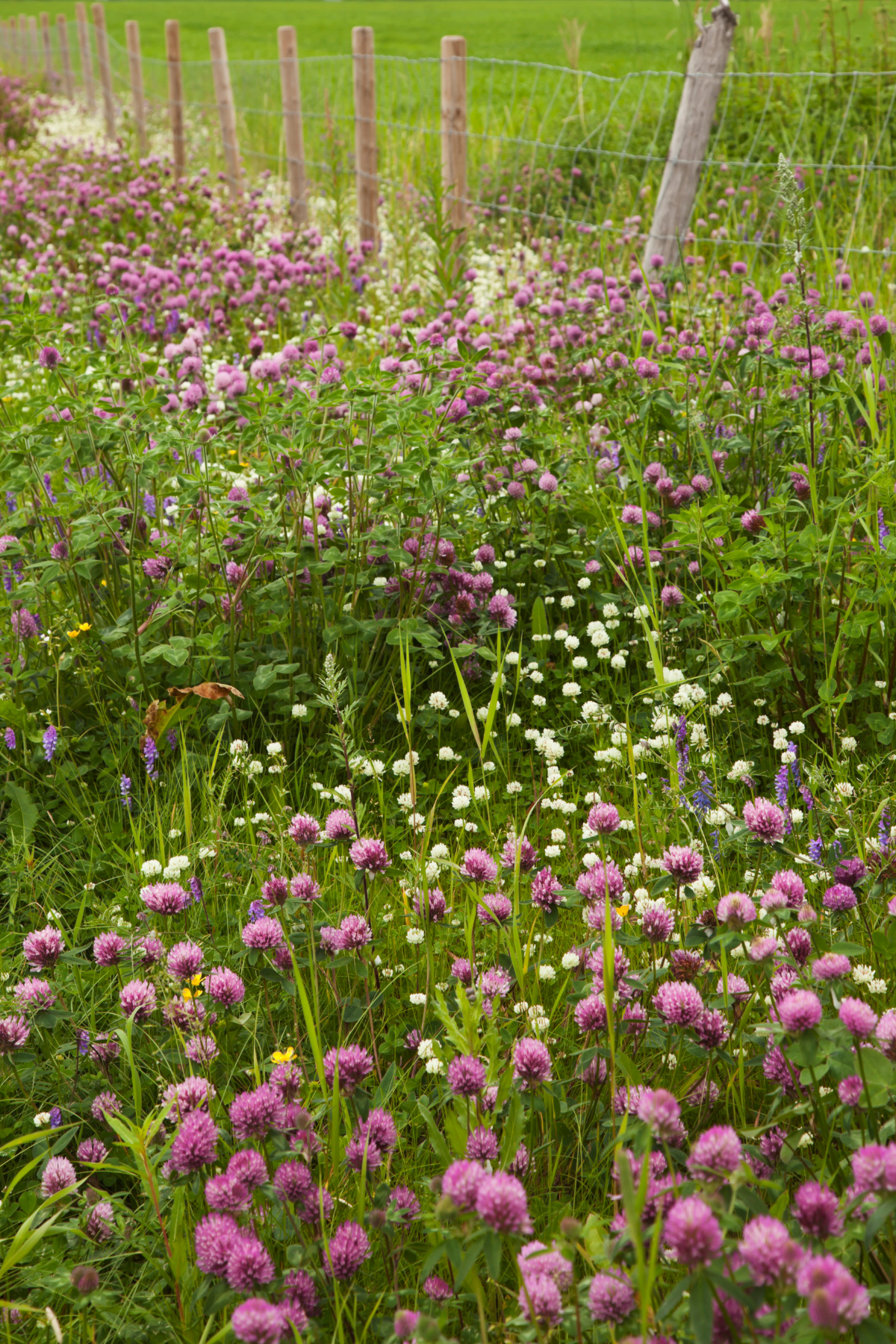
Rewild A Portion Of Your Yard
Rewilding is the practice of letting your yard grow a bit more naturally. While we have part of our yard maintained for open play and sports, we leave some sections of our yard to grow more naturally. To rewild a section of your yard, let the grass grow longer, allow wildflowers to flourish, and let nature run its course.
With a bit of love and attention, particularly to keep out nasty and overwhelming invasives, rewilding doesn’t need to look messy or unkempt. You may even consider adding a cute little sign that says “Rewilding” or something similar to show your neighbors this natural section of your yard is maintained with purpose.
Create a Homegrown National Park
If you want something more curated and clean, you could plant native wildflowers and small plants in a contained space along the edge of your yard, as a border near your home, or in a special native plant garden. Check out resources like Homegrown National Park or create a Certified Wildlife Habitat to make your yard an oasis for all the creatures in your community.
Native plants, wildflower meadows, and native grasses create much more biodiverse and thriving ecosystems in our yard than traditional grass lawns. These sustainable lawn alternatives support the well-being of so many species (not to mention the health of the overall food web on which we are dependent). Start with small spaces if that’s what feels most comfortable. Without giving up grassy play spaces, you can still incorporate all sorts of native plants, edible plants, and native grasses throughout your yard.
In many cases, creating a Homegrown National Park or a Certified Wildlife Habitat in your yard doesn’t have to cost any extra money. It’s simply a matter of choosing better, more productive vegetation for your yards than the ornamental grasses and non-native plants that landscapers have come to rely on. As a bonus, native plants and landscaping that have positive environmental impacts often have lower maintenance as well, saving you money and time managing your yard.
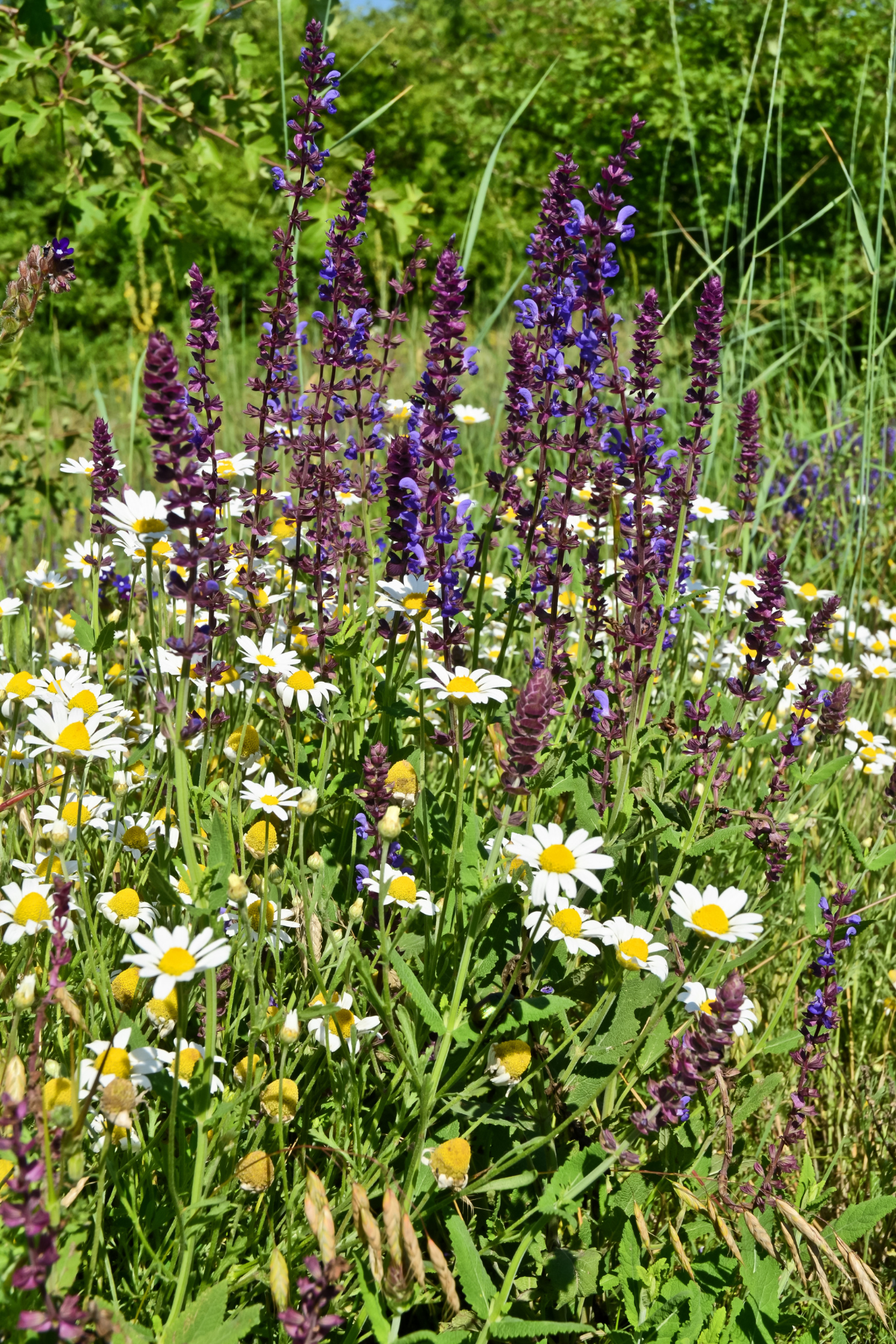
Plant A Pollinator Garden
As I mentioned earlier, butterflies, bees, and other pollinators are losing habitat and food supplies at high rates. Save a place in your yard for a few plants specifically catering to pollinators. My younger son and I created a small pollinator garden in our yard just for him. We purchased and planted a few perennial pollinator-attracting plants from a local nursery, and I let him manage it as he wished. He’s very proud of the little space and happy to show it off to friends when they visit.
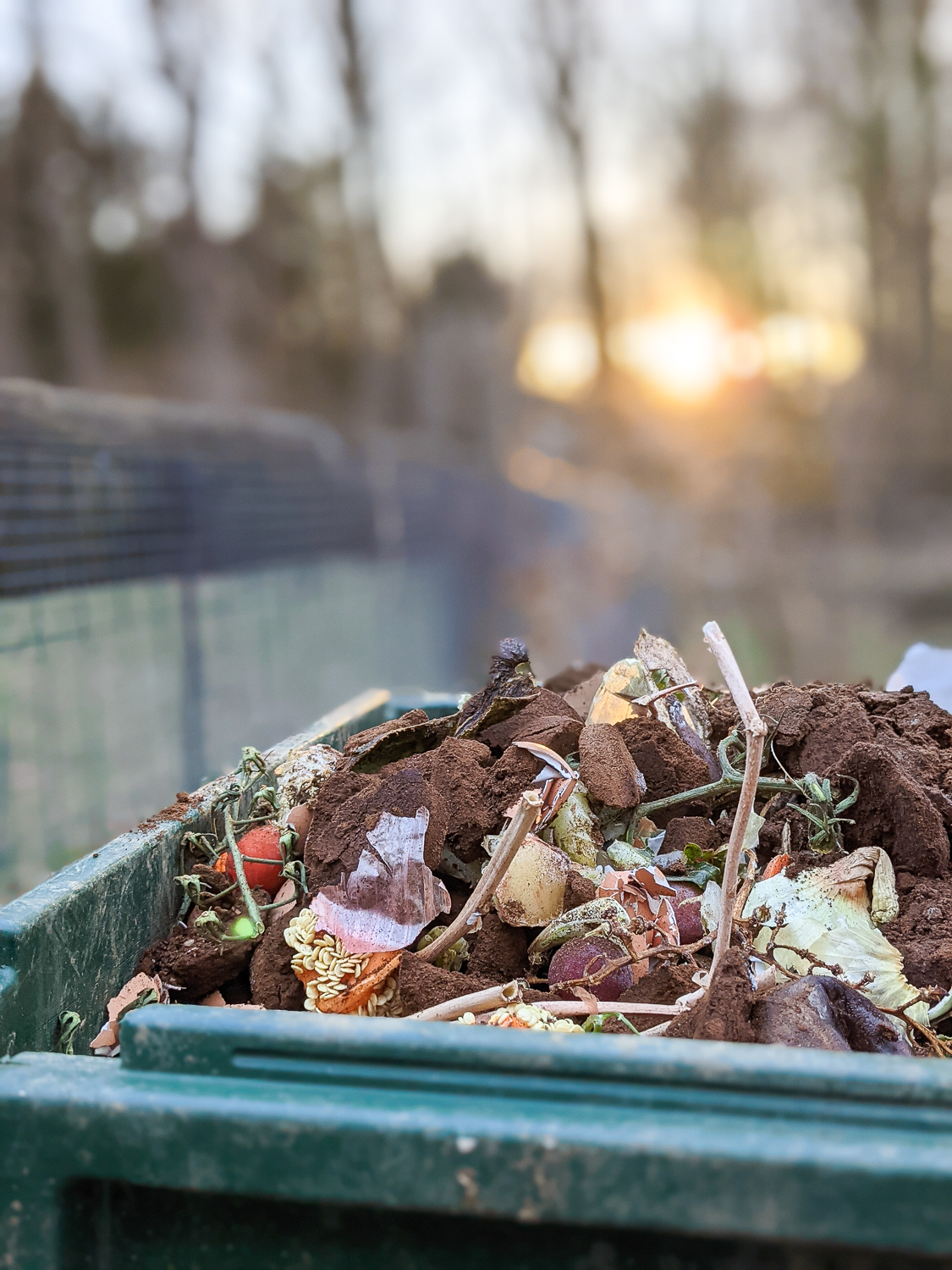
Start Composting
Don’t let all your food scraps and yard waste go to waste. Organic waste is loaded with valuable nutrients that naturally replenish the soil and make plants and vegetation healthier. Start composting at home (there are lots of different ways to put your food scraps to good use), and use the finished compost to feed soil in your yard or garden. Your plants and all the amazing microorganisms in the soil will thank you. We have all sorts of resources to help you compost, so go check them out and get started if you’re not already doing it!
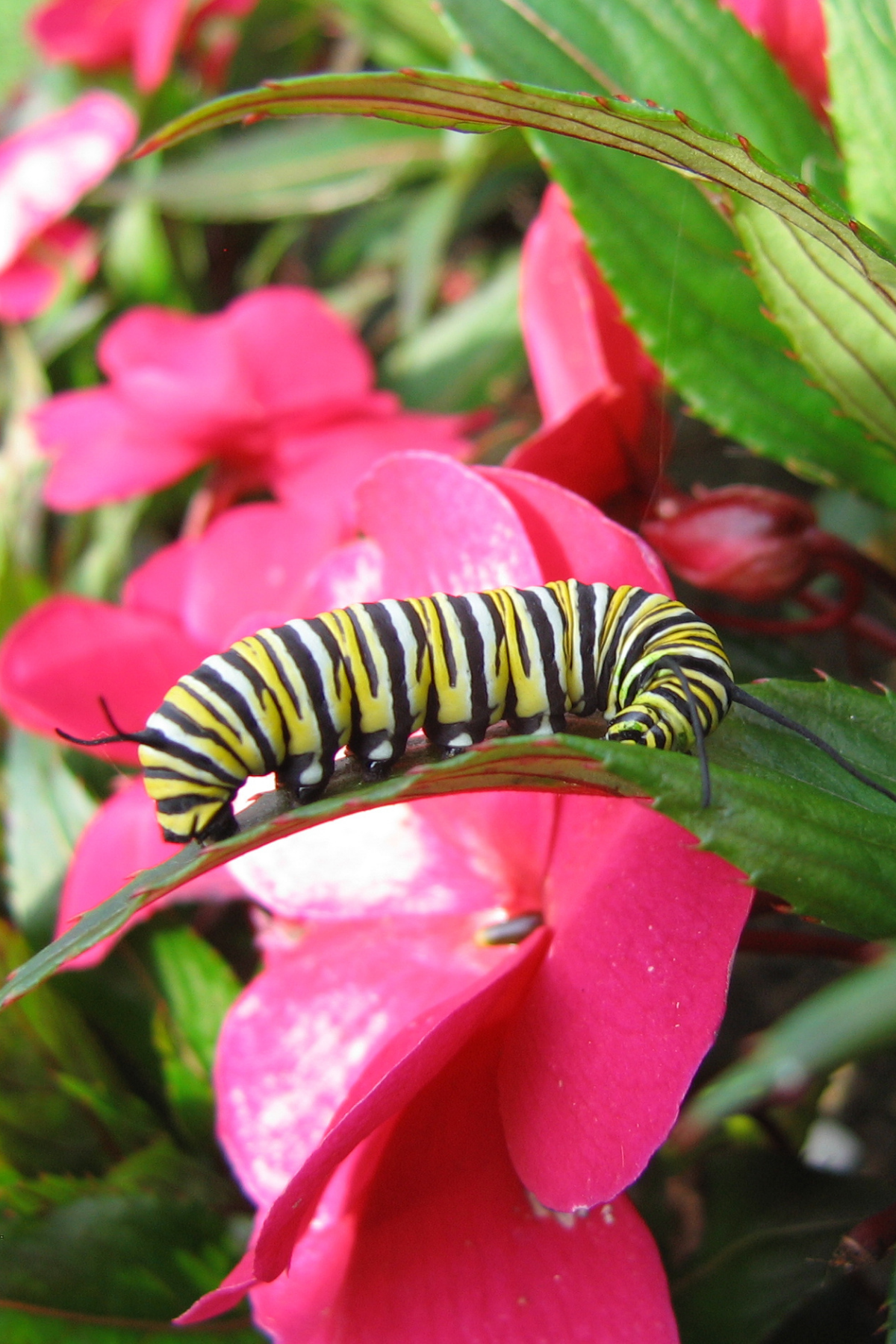
Incorporate Milkweed For The Monarchs
Did you know that the North American monarch is the only butterfly known to make a two-way migration like birds do? Unlike other butterflies, monarchs cannot survive the cold winters of northern climates so they travel south for the winter. Some travel as far as 3,000 miles!
According to a September 2020 study by the United States Fish and Wildlife Service, monarch butterfly populations are decreasing dramatically and some are at risk of extinction. There are many causes for this decline. Among them, monarch butterflies have a much harder time finding suitable habitats for reproduction.
Milkweed is the host plant for the monarch butterfly. Without milkweed, monarch larvae would not be able to develop into a butterfly. In some areas, milkweed is considered a noxious weed, so the amount of milkweed available for monarchs is declining across the country.
Find a place in your yard (maybe in your pollinator garden) to plant milkweed. If you’re lucky, you’ll see the bright-colored caterpillars before they spin their cocoons and transform into beautiful butterflies.
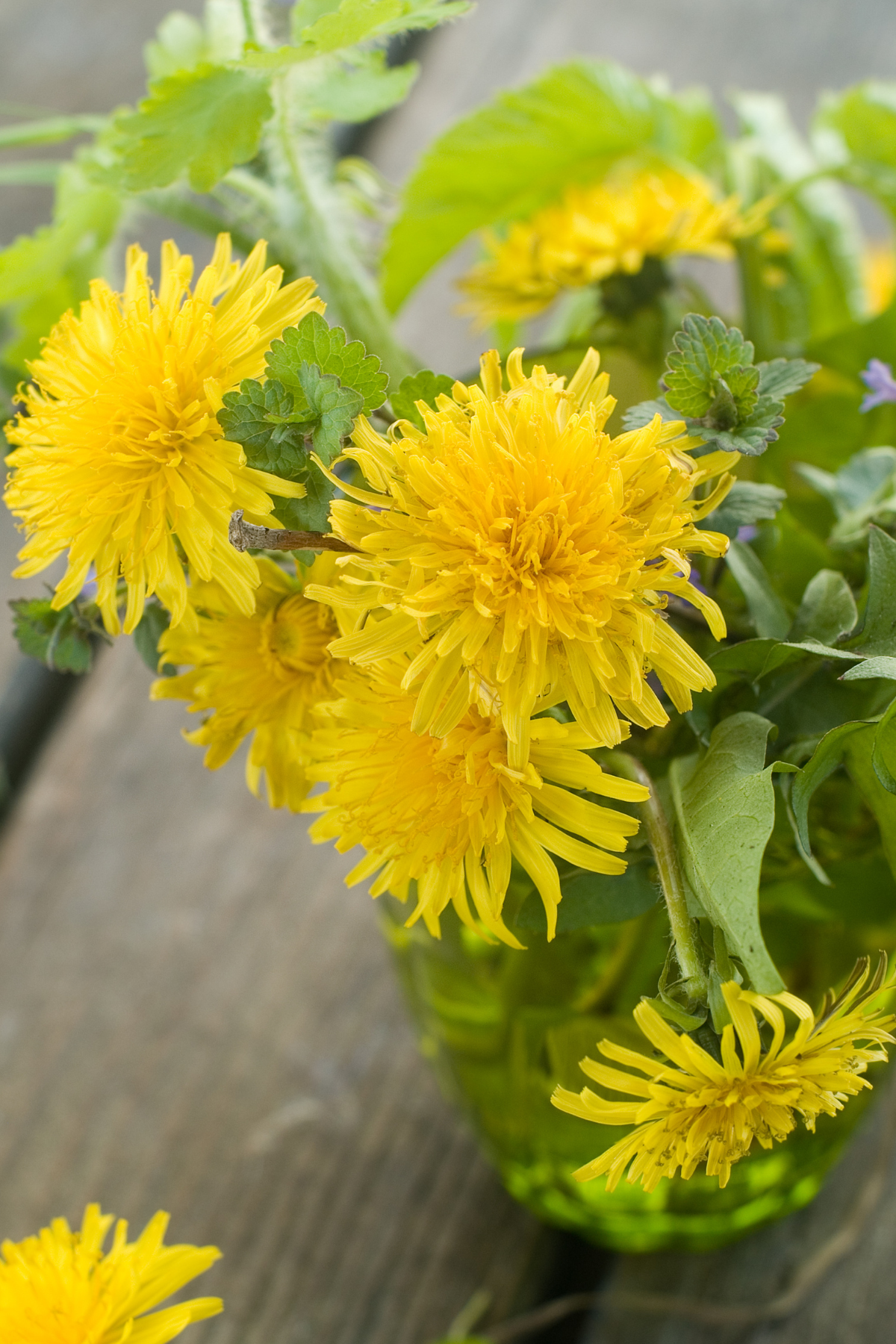
Learn To Love The Dandelions
I know this might be an unpopular opinion, but dandelions aren’t so bad. Dandelions and their leaves are edible for humans and provide an important source of nectar for bees and other beneficial insects. (Yes… the wildflowers in our yard continue to be important to a healthy ecosystem.)
Dandelions are also good for the soil. Dandelions can help balance the pH of acidic soil, and the deep dandelion taproot helps break up dry, compacted soil. Although we think of them as weeds, the presence of dandelions and other durable plants is often an indicator of soil quality. They show up because the soil needs them. Nature has been taking care of itself far longer than we’ve been trying to control it with chemicals, and it’s much more effective at self-care if we give it a chance to do what it’s been practicing for eons.
Try shifting your perspective on dandelions. View them as an organic tool for soil amendment, a food to forage and add to your summer salads, or even something you can pick to create a small bouquet of wildflowers for your kitchen counter. Our little ones inherently know that dandelions are beautiful and love creating handpicked bouquets for their loved ones. Follow their lead and learn to love the dandelions in your yard instead of applying harsh chemicals to kill them.
Using a lawn care product like instead may even reduce the dandelions in your yard as the soil becomes healthier and the lawn lusher in order to help block dandelion growth. I barely notice the dandelions in my yard. They’re here and gone before I have time to think about plucking them from the ground, and I know they provide a nourishing food source for so many insects on which our ecosystem relies.
Museum Lawns | Look But Don’t Touch
Modern lawns have a reputation for being a heavy and useless environmental burden, and I think that’s because we too often treat them like museums. We curate them and care for them with great diligence primarily so they look beautiful regardless of their functional purpose. As a result, the collective “we” cares less about the chemicals on the lawn or the underlying soil health and more about the way the lawn looks from the curb.
Let’s shift the status quo and focus on preserving lawns as an area for play and togetherness. When we view lawns through the lens of space to spend time, we prioritize more natural and eco-friendly care for that space while also transforming unused lawns into pollinator gardens and rewilding areas (or even front yard vegetable gardens for those feeling particularly ambitious).
How do you incorporate more eco-friendly lawn care alternatives into your outdoor space? Have you tried instead? I’d love to hear your ideas!
If you like this post about eco-friendly lawn alternatives, you might also like
Eco-Friendly Lawns | Alternatives To Grass and Why It Matters
7 Ways to Reduce Waste in the Garden

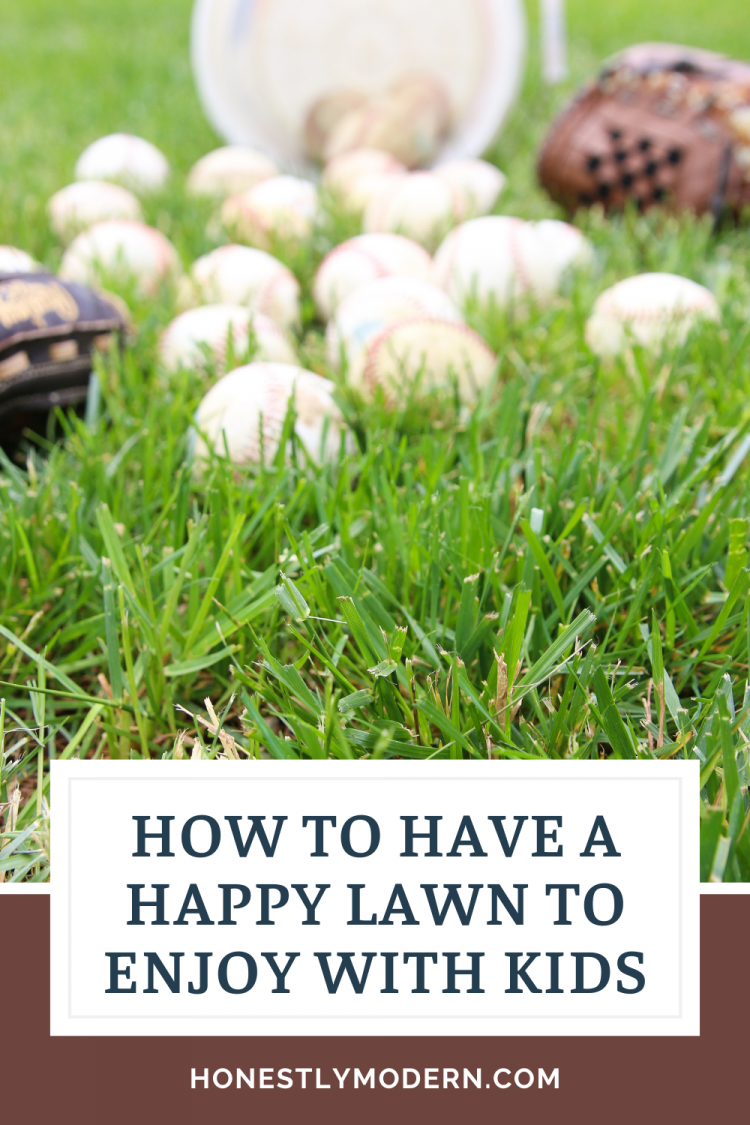
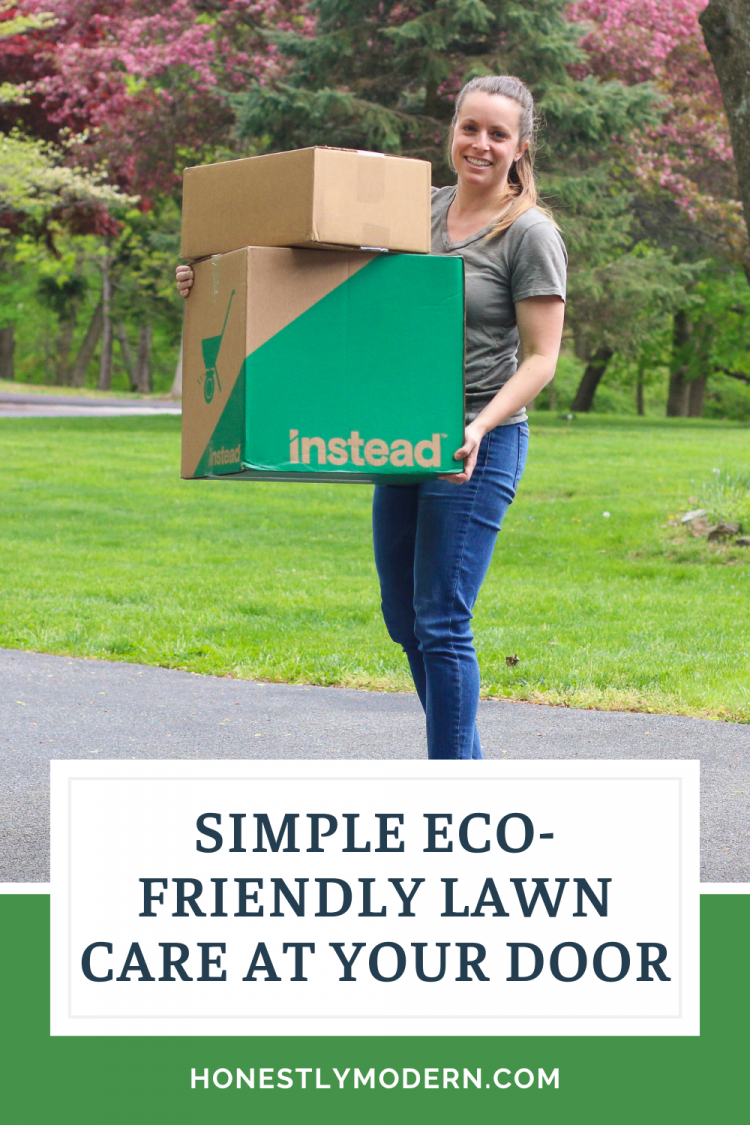

Jen Panaro
Jen Panaro, founder and editor-in-chief of Honestly Modern, is a self-proclaimed composting nerd and advocate for sustainable living for modern families. To find her latest work, subscribe to her newsletter, Stepping Stones.
In her spare time, she’s a serial library book borrower, a messy gardener, and a mom of two boys who spends a lot of time in hockey rinks and on baseball fields.
You can find more of her work at Raising Global Kidizens, an online space to help parents and caregivers raise the next generation of responsible global citizens.



